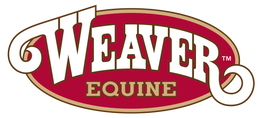When it comes to leading, handling, and keeping your horse safe, the halter is one of the most essential pieces of equipment you own. A halter serves as both a control tool and a safety feature, making correct fit just as important as choosing the right style or material. A poorly fitted halter can cause discomfort, irritation, or even serious accidents, while a properly fitted one ensures both safety for the handler and comfort for the horse.
So, how do you know if your horse’s halter actually fits? Let’s break it down.
Choosing the Right Horse Halter
Before you can adjust for fit, it’s important to select the type of halter that matches your horse’s needs and your handling situation.
- Nylon Halters: Known for their durability and strength, and available in many colors and patters, nylon halters are a popular choice for everyday use. Weaver Equine offers lots of options, including custom embroidery, to personalize nylon halters.
- Breakaway Halters: Designed with either a leather crownpiece or a breakaway fuse, these halters provide added safety when trailering or turning horses out. If your horse gets caught, the halter is designed to break, preventing injury.
- Rope Halters: Lightweight and easily adjustable, rope halters are commonly used for groundwork and training. Their thinner design applies more precise pressure, which can help reinforce cues, but they should be used thoughtfully to avoid unnecessary pressure points.
- Leather Halters: A traditional choice for both everyday use and show barns, leather halters combine durability with comfort. They conform to a horse’s head over time, reducing rubbing, and are often considered safer than nylon because they’re more likely to break under extreme pressure. Leather halters are also favored for their classic, polished look, making them ideal for showing or special occasions.
- Kalley Krickeberg Horseman's Combination Halters: A hybrid option developed with training in mind, the Horseman’s Halter combines the strength of nylon webbing or leather with a rope noseband for more precise control. Its innovative design reduces torque on the horse’s poll, keeps hardware away from the eyes, and features a sliding chin ring that allows the lead rope to rotate freely for groundwork or lunging. Versatile and secure, this halter is an excellent choice for handlers who want both everyday durability and refined responsiveness.
When shopping, don’t just look at style, always consider the purpose. Everyday handling may call for nylon, while travel often requires the added security of a breakaway design.
Horse Halter Sizes: Where to Start
One of the most common questions is, what size halter does my horse need?
Weight ranges can be a useful starting point:
- Small Horse/Cob: 500–800 lbs.
- Average Horse: 800–1,100 lbs.
- Large Horse: 1,100–1,600 lbs.
These guidelines give you a baseline, but every horse’s head shape is different. That’s why final adjustments are critical. Check the size chart on each halter to see what size your horse needs. If you order the wrong size, no worries. With our satisfaction guarantee we'll make sure you get the right one.
How to Fit a Horse Halter: 4 Key Areas to Check
Once you’ve selected the right size, the real work begins—making sure the halter is adjusted correctly. There are four main points to check
-
Crownpiece: The crownpiece should sit across the horse’s poll, close to the ears but not touching them. Its position affects how the noseband, cheek pieces, and throatlatch all sit. Adjusting the crownpiece is often the first step in correcting overall halter balance.

-
Noseband: The noseband should rest about halfway between the eyes and nostrils. Side hardware should sit below the cheekbones, with two to three fingers’ width between the noseband and cheekbone.
- Too low: May interfere with breathing or slip over the nose.
- Too high: Can rub the horse’s facial bones.

*A lower noseband than recommended may lead to impaired breathing or cause slippage over the nose. It also allows more room for the crownpiece to move, potentially slipping over the ears.
-
Throatlatch: The throatlatch should rest comfortably where the jowl meets the neck. A good rule of thumb is three to four fingers of space between the throatlatch and the horse’s throat. This ensures the horse can breathe and swallow freely, while still preventing hooves or objects from catching.

-
Cheek pieces: Cheek pieces should run parallel to and below the cheekbones. If they’re too high, the halter will rub and cause irritation. Incorrect angles can usually be corrected by adjusting the crownpiece.

Why Proper Halter Fit Matters
A halter that’s too large can:
- Slip off entirely.
- Slide across the face and push hardware into sensitive areas like the eyes.
- Create dangerous situations where a hoof or object can get caught.

A properly fitted halter should allow the horse to open its mouth and chew, with the hardware and straps sitting in comfortable locations on the horse’s head.

On the other hand, a properly fitted halter allows your horse to open its mouth, chew comfortably, and move without restriction, all while giving you safe control.
Final Thoughts on Halter Fit
Whether you’re working with a young horse or catching for a day of work or play, a well-fitted halter is key to both safety and comfort.
Remember:
- Start with the correct halter size based on weight.
- Adjust crownpiece, noseband, throatlatch, and cheek pieces.
- Always check that your horse can breathe, chew and move comfortably.
With the right halter, fitted correctly, you’ll have peace of mind knowing your horse is safe and comfortable in every situation.

